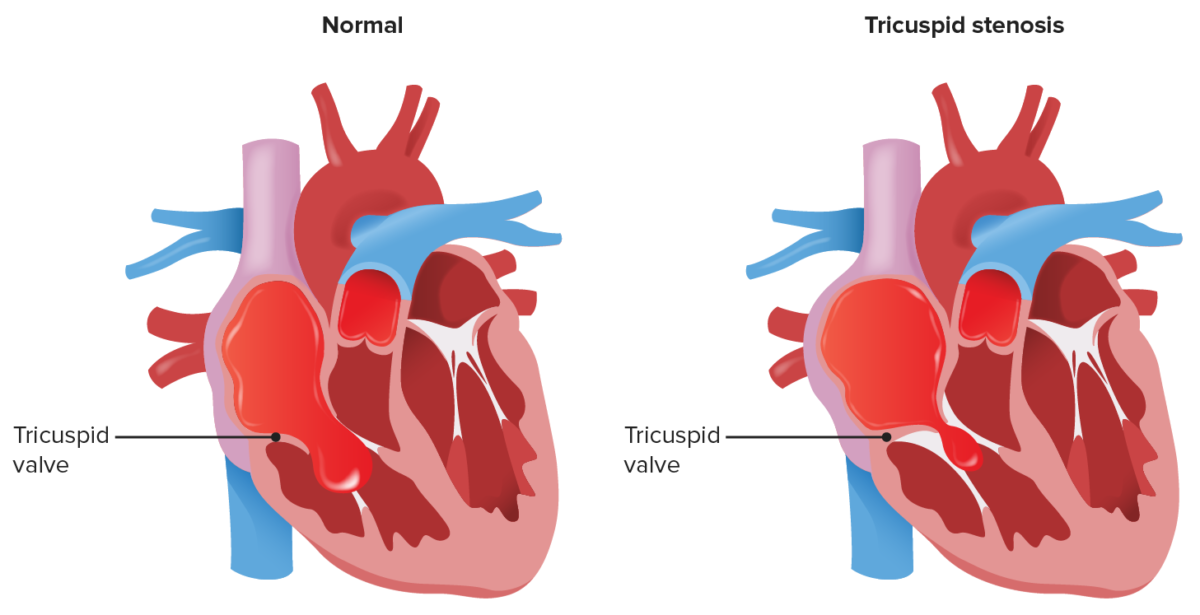Tricuspid stenosis Stenosis Hypoplastic Left Heart Syndrome (HLHS) (TS) is a valvular defect that obstructs blood flow Blood flow Blood flow refers to the movement of a certain volume of blood through the vasculature over a given unit of time (e.g., mL per minute). Vascular Resistance, Flow, and Mean Arterial Pressure from the right atrium to the right ventricle during diastole Diastole Post-systolic relaxation of the heart, especially the heart ventricles. Cardiac Cycle. This condition most commonly results from rheumatic heart disease Rheumatic Heart Disease Cardiac manifestation of systemic rheumatological conditions, such as rheumatic fever. Rheumatic heart disease can involve any part the heart, most often the heart valves and the endocardium. Rheumatic Fever or a congenital defect, and is usually found in conjunction with other valvular disease. A mid-diastolic murmur is best heard at the lower left sternal border. Mild TS may be asymptomatic or present with systemic venous congestion due to increased right atrial and venous pressures. Echocardiography Echocardiography Ultrasonic recording of the size, motion, and composition of the heart and surrounding tissues. The standard approach is transthoracic. Tricuspid Valve Atresia (TVA) can establish the diagnosis. Treatment focuses on heart failure Heart Failure A heterogeneous condition in which the heart is unable to pump out sufficient blood to meet the metabolic need of the body. Heart failure can be caused by structural defects, functional abnormalities (ventricular dysfunction), or a sudden overload beyond its capacity. Chronic heart failure is more common than acute heart failure which results from sudden insult to cardiac function, such as myocardial infarction. Total Anomalous Pulmonary Venous Return (TAPVR) management, and surgery is reserved for severe disease.
Last updated: May 26, 2025
Tricuspid stenosis Stenosis Hypoplastic Left Heart Syndrome (HLHS) (TS) is the narrowing of the tricuspid valve Tricuspid valve The valve consisting of three cusps situated between the right atrium and right ventricle of the heart. Heart: Anatomy, which obstructs the flow Flow Blood flows through the heart, arteries, capillaries, and veins in a closed, continuous circuit. Flow is the movement of volume per unit of time. Flow is affected by the pressure gradient and the resistance fluid encounters between 2 points. Vascular resistance is the opposition to flow, which is caused primarily by blood friction against vessel walls. Vascular Resistance, Flow, and Mean Arterial Pressure of blood from the right atrium to the right ventricle, resulting in a transvalvular gradient.

Diseased valve is obstructing blood flow out of the right atrium.
Image by Lecturio.
Transthoracic echocardiogram of apical 4-chamber view showing thickened and doming mitral valve and tricuspid valve in rheumatic heart disease
Image: “Transthoracic echocardiogram” by US National Library of Medicine. License: CC BY 2.0